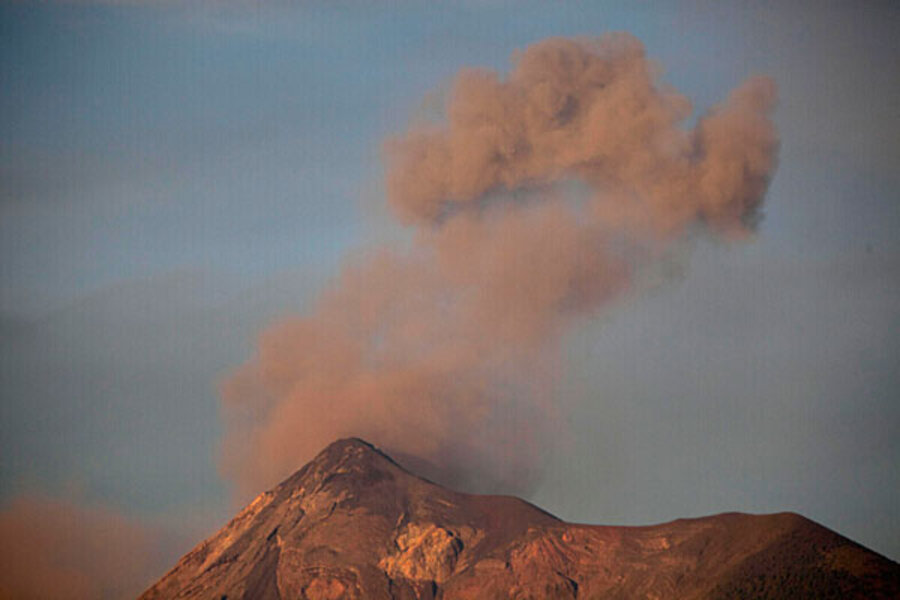Guatemala volcano eruption cools as Independence Day celebrations heat up
Loading...
| La Antigua, Guatemala
Guatemalans received a scare on the eve of their Independence Day celebrations. The Volcano of Fire, Fuego, had its strongest eruption since 1974 on Thursday leading to the evacuation of around 6,500 people, according to CONRED, the Guatemalan disaster agency. Close to 900 people are in shelters after the eruption created massive plumes of smoke and ash that could be seen from Guatemala City and neighboring UNESCO heritage city La Antigua, both less than 46 miles away.
"On a scale of 1 to 5, with five being the worst, I would say this was a 3.5," says David De León Villeda, spokesperson for CONRED.
On the morning of the explosion motorcycle shop owner Ignacio Nuñez had a clear view of Fuego from his shop in downtown La Antigua. "It's been bad, but I've never seen it this bad. If it blows its cone, we're done,” Mr. Nuñez said.
“But I don't think that will happen, the worse is that all access to the nearby villages will be sealed off, that's happened before and that's total chaos."
Since Tuesday Fuego was registering an increase in seismic activity with more lava flow, ash, rumblings, and a quickly worsening situation, Mr. Villeda says. It was the strong explosion and the falling of ash in nearby communities that prompted the national call for evacuations in seven communities totaling 30,000 residents in the western part of the country.
The 12,345-foot tall volcano is one of three active volcanoes in the area – the other two are Pacaya and Volcán Santiaguito – and there is a total of 33 in the country. The last big eruption happened in 2010 with the eruption of Volcano Pacaya that is south of Guatemala City and led to the evacuation of half as many people. Some could not return to severely damaged homes for months and lived in temporary shelters erected by the government. Many of the communities situated at the foot of the volcanoes are made up of people who were displaced during Guatemala’s 36-year armed conflict. They live there despite the lack of road access and infrastructure.
Villeda says residents took the evacuation alerts seriously after several trainings and simulations were conducted in the communities this year.
“When you co-habitate with the volcano you know perfectly well that things could worsen quickly – early warning signals can save your life,” Villeda says.
The volcano’s activity has decreased dramatically. Today, marching bands pour through the streets of the capital and La Antigua against the back drop of a blue sky. The sounds of drumming and students marching in commemoration of the country's independence seems to distract residents and tourists alike from the ongoing, albeit smaller, explosions, lava flows, and visible columns of ash coming from the volcano. Fuego is returning to its previous state, Villeda says, at least for now.







